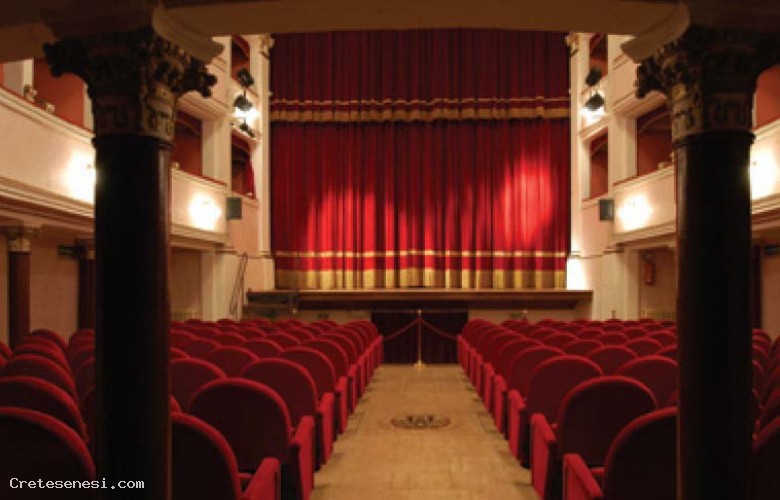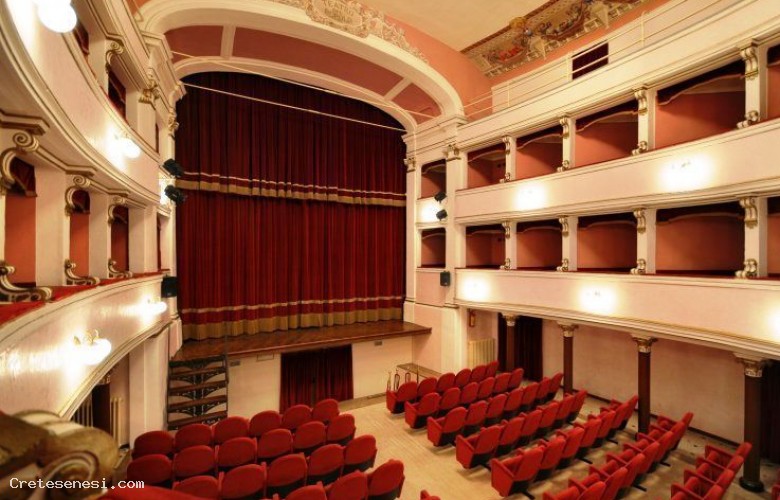Cinemas & Theaters
Teatro del Popolo
RAPOLANO TERME

.jpg)
.jpg)
.jpg)
Teatro del Popolo
Piazza del Teatro, 4 53040 RAPOLANO TERME
Telefono 0577 724617
In the middle of the last ten years of 1800, Rapolano Terme, on the initiative of the Philharmonic Society, had its own theatre which was “aimed to the cult of civility”. The theatre, projected by the sienese architect Bettino Marchetti, had the typical shape of the Italian theatre with a horseshoe plant and 33 boxes divided into two orders and a gallery; the room, in the place of the first orders of boxes, has a gallery, which through elegant columns, allows the entrance to the seats from the whole perimeter of the room. Run since 1914 by a Company which linked the Philharmonic and Dramatic, the theatre had as guests passing companies and since the ’30s it also started the activity of cinema. For this aim the central stage of the second order was turned into projection room. After becoming the seat of the Fascist Party and having undergone serious damages during the last World War, it was quickly rebuilt and it started again its activity in 1946. In 1983 it has undergone an important restoring of the structure and the decorations, with the remaking of the roof, of the boxes’ floors, of the electric system and of the vault’s decoration. The present aspect is the fruit of a further work of adaptation made between 1985 and 2001, according to a project by the architect Claudio Starnini. Today the theatre still keeping the original aspect of theatrical room with eclectic shapes, which are typical of the end of the XIX century, is a middle-dimension building mainly right for cultural initiatives of the principal town and of the sienese area. In 1995 it has been declared a cultural heritage of historic and artistic interest by the Ministry of Cultural and Environmental Heritage. After the recovery, the theatre also thanks to the support of the Municipal Government, apart from a successful theatrical season, with a big audience, it also gave hospitality to interesting initiatives: the international literary prize “Il Molinello” and the national festival of “Goccia d’Oro”. And again, the Philharmonic Society runs a theatrical school for children, which is a very rare and significant case of theatrical space’s management, almost exclusively through the voluntary work of its members.
In the middle of the last ten years of 1800, Rapolano Terme, on the initiative of the Philharmonic Society, had its own theatre which was “aimed to the cult of civility”. The theatre, projected by the sienese architect Bettino Marchetti, had the typical shape of the Italian theatre with a horseshoe plant and 33 boxes divided into two orders and a gallery; the room, in the place of the first orders of boxes, has a gallery, which through elegant columns, allows the entrance to the seats from the whole perimeter of the room. Run since 1914 by a Company which linked the Philharmonic and Dramatic, the theatre had as guests passing companies and since the ’30s it also started the activity of cinema. For this aim the central stage of the second order was turned into projection room. After becoming the seat of the Fascist Party and having undergone serious damages during the last World War, it was quickly rebuilt and it started again its activity in 1946. In 1983 it has undergone an important restoring of the structure and the decorations, with the remaking of the roof, of the boxes’ floors, of the electric system and of the vault’s decoration. The present aspect is the fruit of a further work of adaptation made between 1985 and 2001, according to a project by the architect Claudio Starnini. Today the theatre still keeping the original aspect of theatrical room with eclectic shapes, which are typical of the end of the XIX century, is a middle-dimension building mainly right for cultural initiatives of the principal town and of the sienese area. In 1995 it has been declared a cultural heritage of historic and artistic interest by the Ministry of Cultural and Environmental Heritage. After the recovery, the theatre also thanks to the support of the Municipal Government, apart from a successful theatrical season, with a big audience, it also gave hospitality to interesting initiatives: the international literary prize “Il Molinello” and the national festival of “Goccia d’Oro”. And again, the Philharmonic Society runs a theatrical school for children, which is a very rare and significant case of theatrical space’s management, almost exclusively through the voluntary work of its members.